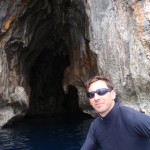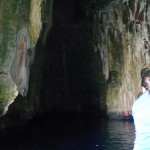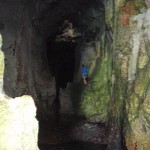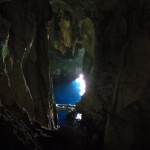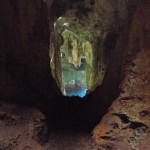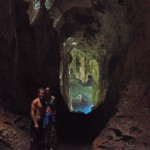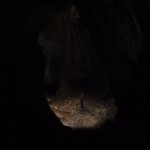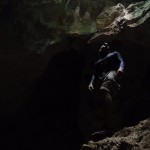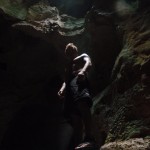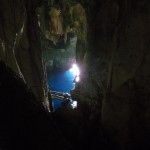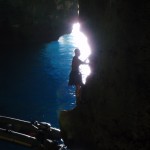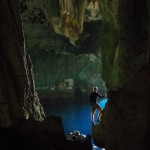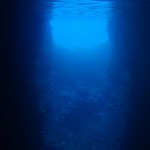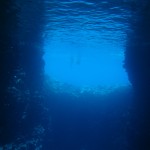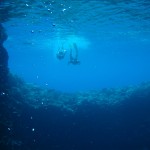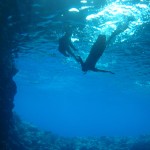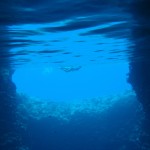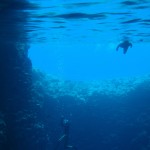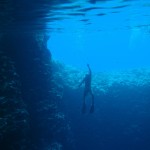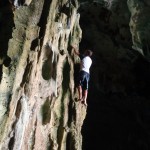Oct 10 2010
Jon. From the Yacht.
this post refers to events which primarily happened September 18th-21st)
“Did you notice how the masseuse, she giggled after saying -You must be Jon. From the yacht.-” I asked Allison after we emerged from our respective massages at Octopus Resort on Waya Island in the Yasawa island group of Fiji.
“Do you remember me telling you earlier today that everyone here calls you that phrase?” she dryly replied.
I protested that she hadn’t; she reminded me that she had today, and yesterday as well, and gave details to substantiate. I had to concede.
I sighed a popular refrain of her visit here, “You’re right Allison,” and I think as I said it, she smirked.
In Fiji, a distinct classification between places to stay on the outer islands is the location is either a resort or it is a backpacker’s camp. On the outer islands, there are few or no places in between. Names can be deceiving as many backpacker camps will insert resort into their name as linguistic facade. I have been unable to divine a hard rule to classify resorts from camps, but have settled on three guiding characteristics. Backpacker’s camps have all three; resorts can sometimes have one, though in the end being classified as a resort is still no indicator you will enjoy yourself there. 1) Backpacker’s camps are cheap. 2) Backpacker’s camps have communal meal times where everyone has to eat each meal within a prescribed. These times are normally shorter than is convenient to my style of lazy relaxation, ie. Breakfast is 7-9, lunch: 12-2 and dinner 6-8. More importantly, tables at which to eat are also communal. 3) Backpacker’s camps have some, but usually not exclusively, communal living space. Dorms, mmm, fun.
So by this system, Octopus Resort is classified as a backpackers camp, though given it’s priciest accommodations, one could claim it fails #1. Lonely Planet agrees with the outcome of my classification scheme in this instance, though it does say: “Compared with your average Yasawa backpacker camp, Octopus is more than a few notches up the coconut tree in terms of quality and yet still retains its unpretentious charms.”
A few coconut fronds indeed. After a day wandering Nadi, followed the next day by a sail to Beachcomber Island (a tiny speck of sand with a decidedly youthful backpacker camp) and anchoring off Beachcomber that night, we sailed/motored our way to Waya Island. At Waya, Matt dinghied us into the resort. We arrived to large booms of “Bula!” The ubiquitous greeting of hello in Fiji, which all tourist-minded businesses yell towards new guests or passerby. At the resort desk, I said I was Jon, and was interrupted with, “Ah, yes, Jon. Jon from the yacht.” Yes, I replied, I am Jon from the yacht. On our reservation, I had put that we would be arriving by sailboat, and would not require the customarily included transportation from Nadi, and it only would make sense that the front desk would know me as such, I reasoned.
Checked in, we relaxed at our private bure, (no dorms for us, I already did college) for a while before a welcome ceremony for anyone who arrived today. The bure was ocean-side and we watched the sun set over the Pacific Ocean from the hammock that hung not ten feet away from our little porch. The welcome ceremony involved kava, a drink I had begun to enjoy. After the welcome ceremony was over I stuck around. Seated around the kava bowl, I talked with the Fijians who had run the kava ceremony and who were now idly playing a small guitar, singing, drinking kava or passing it to others. After a question one of them couldn’t field, he turned to another man, who turned out to be the resort manager. He asked if I arrived today and after I replied yes and motioned to Syzygy anchored a quarter a mile away, he intoned, “Ah, you are Jon. From the yacht.” As he spoke, he nodded knowingly and the corners of his lips turned up in a smile. This may have been from the kava.
That evening I approached the bar with two bottles of wine for the bar to hold on to, I had brought them from Syzygy and you were not allowed to keep any food and drink in your rooms. (the single small downside of Octopus is it seems a few mice scurry about the resort). The bartender said he would certainly hold onto them for me and asked where I had gotten them. I said I had brought them from my sailboat when we arrived today. “Ah! You are Jon! From the yacht!” “Yes,” I smiled, “I am Jon from the Yacht.” “Of course we can hold this for you!” he said smiling. They do this for everyone by the way. Allison and I would saddle up to the bar many times over the next three days drinking a variety of concoctions. Their pina colada was good; their mojito (called a wayan mosquito) just didn’t stand up to ones I make at parties (and written about in magazines, no lie). It was a espresso-ice cream-frangelico combination though that we went back for again and again and again. Delicious.
The waitress at our lunch the next day… same thing, “Ah, you are Jon. From the yacht.” Replete with little giggle. When I asked another staff person at the front desk about a special lobster dinner I had booked when making our reservation, she replied, “Lobster dinner? You must be Jon! From the yacht. Sabrina, this is Jon from the yacht, who gets the lobster dinner. Can you help him schedule it?” And then all 4 women in the office I swear tried to hide a little giggle. At the lobster dinner, our server came up to our table and exclaimed, “Bula! You are Jon. Yes? From the yacht?” I had finally caught on to the pattern. Allison noted it the first time I believe.
Octopus is a laid back resort, there are a variety of activities to choose from, but the staff is supportive of being fabulously lazy. Pool, dive shop, great snorkeling right off the beach, inexpensive, good food (lunches are best, and the lobster dinner is totally worth paying for) traditional village visits. On one of those village visits, Allison and I took the opportunity to go to a church service as Fijian village culture is renowned for church services with beautiful singing. The Methodist service was quite impressive, if a touch awkward (for me) when many of the tourists (with the permission of our local guide) were taking pictures of the service.
Octopus Resorts is an amazing place to stay. If you visit Fiji, I highly recommend staying there.
